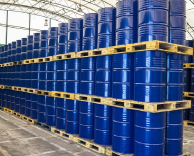What is Viscosity? Definition, Types, and Key Differences Explained.
What is Viscosity?
Viscosity is a critical property of fluids that determines how
they resist flow. It plays a significant role in machinery
lubrication, hydraulics, automotive engines, and many other
industrial applications. In simple terms, viscosity describes the
"thickness" or "thinness" of a fluid and its ability to flow.
Understanding viscosity is crucial for selecting the right
lubricant to ensure that machinery operates smoothly and
efficiently, prevent excessive wear, and reduce maintenance costs.
Lubricants with appropriate viscosity help minimize friction
between moving parts, ensuring better performance and extending
the machinery's lifespan. Without the right viscosity, machinery
may experience overheating, increased friction, and potential
breakdowns. This article provides an in-depth explanation of
viscosity, its types, real-life applications, and how it affects
fluid performance.

Definition of Viscosity
Viscosity measures a fluid’s internal resistance to flow. A fluid with high viscosity is thick and flows slowly, while a fluid with low viscosity is thin and flows easily. For example, honey has a high viscosity, while water has a low viscosity. Viscosity is crucial in lubrication systems, where the fluid must create a protective layer between moving parts to reduce wear. The right viscosity ensures that the lubricant flows adequately while providing sufficient protection to prevent damage.
In scientific terms, viscosity is the ratio of the force per unit area required to overcome a fluid's internal resistance and cause it to flow at a specified rate. It’s often measured in Pascal-seconds (Pa.s) for dynamic viscosity and centistokes (cSt) for kinematic viscosity.
Viscosity Meaning and Explanation
The meaning of viscosity in lubrication can be understood as the property of a fluid that governs how it interacts with surfaces, particularly in preventing friction and wear between moving machine components.
When selecting a lubricant, the fluid’s viscosity at operating temperatures must be considered. A lubricant that is too viscous at high temperatures may become too thick, impeding its ability to flow efficiently and leading to unnecessary energy consumption. Conversely, a lubricant that’s too thin may fail to create the necessary barrier, resulting in wear, overheating, or even system failure.
Viscosity is not static it changes with temperature. As the temperature rises, the viscosity of most fluids decreases, making them flow more easily. On the other hand, as the temperature drops, the fluid thickens and becomes more resistant to flow. This temperature dependence is why it’s vital to choose lubricants with an appropriate viscosity that can function effectively under a range of environmental conditions. >
Types of Viscosity
Viscosity is generally classified into two types: kinematic viscosity and dynamic viscosity. Each of these types helps to characterize the fluid's flow behavior in different contexts.
Kinematic Viscosity
Kinematic viscosity is a measurement of a fluid’s resistance to
flow under the influence of gravity. It is defined as the ratio of
dynamic viscosity to the fluid's density. This type of viscosity
is especially useful in applications where the fluid needs to flow
in a gravitational field, such as lubricants in engines or
hydraulic systems.
Kinematic viscosity is often measured in centistokes (cSt). A
higher kinematic viscosity indicates a thicker fluid, while a
lower kinematic viscosity indicates a thinner fluid. For instance,
motor oils are rated by their kinematic viscosity to ensure they
perform well under different temperature conditions.
Kinematic viscosity is crucial in understanding how lubricants
flow and how they distribute across machinery parts, especially in
conditions where gravitational forces are a significant factor in
fluid movement.
Dynamic Viscosity
Dynamic viscosity, also referred to as absolute viscosity,
measures a fluid’s resistance to flow when an external force is
applied. It is the most common way of quantifying a fluid's
thickness or resistance to flow, especially in industrial
applications. Dynamic viscosity is defined as the force per unit
area required to move a fluid layer at a given velocity.
Dynamic viscosity is measured in
Pascal-seconds (Pa.s), which can be
converted to Poise (P). A higher dynamic
viscosity means that the fluid will resist flow more, while a
lower dynamic viscosity means the fluid will flow more easily.
For example, motor oil has a specific dynamic viscosity rating to
ensure that it can adequately flow and lubricate engine parts
under high pressure and varying temperatures. The correct dynamic
viscosity helps prevent metal parts from rubbing together,
reducing wear and tear on the engine components.
Viscosity of Fluid: Why It Matters
The viscosity of a fluid is critical for determining how well it
can function in various applications. In lubrication, the fluid’s
viscosity ensures that it flows at the right rate to create an
effective barrier between moving parts. If the viscosity is too
high or too low, the lubricant may fail to adequately protect the
machinery, leading to excessive wear or inefficiency.
The viscosity of a fluid also affects energy efficiency. Fluids
with low viscosity require less energy to pump and circulate,
while high-viscosity fluids can cause increased friction, leading
to higher energy consumption. In industrial systems, selecting the
right viscosity reduces operating costs and minimizes equipment
downtime.
In hydraulic systems, viscosity determines how the fluid moves
through pipes and valves. Fluids with appropriate viscosity ensure
smooth operation, energy efficiency, and consistent pressure. In
engines, the viscosity of oil directly impacts how well it
lubricates moving parts, ensuring optimal engine performance and
longevity.

Viscosity Examples in Real-Life Applications
1.Engine Oil:Engine oil must have the right viscosity to provide proper lubrication at high temperatures. For example, multi-grade oils (like 5W-30) are designed to perform well in both cold and hot conditions. The "W" stands for winter, indicating the oil's viscosity at low temperatures, while the number after it indicates the viscosity at higher temperatures.
2.Grease in Bearings:Bearings require a lubricant with the right viscosity to function effectively. High-viscosity grease may provide excellent protection against wear, but it can be too thick to flow smoothly in fast-moving bearings. Low-viscosity grease might flow easily but fail to maintain a sufficient protective layer under heavy load conditions.
3.Hydraulic Fluids:Hydraulic systems require fluids with precise viscosity to maintain pressure and ensure consistent performance. For instance, hydraulic fluids used in heavy machinery or construction equipment need to flow smoothly through the system without creating excessive resistance, which could lead to overheating or inefficient operation.
Difference Between Dynamic and Kinematic Viscosity
Understanding the difference between dynamic viscosity and kinematic viscosity is key when choosing the appropriate fluid for machinery or industrial applications:
- Dynamic Viscosity measures the fluid's resistance to flow under applied force and is the most widely used method for determining fluid thickness.
- Kinematic Viscosity measures the fluid's resistance to flow under gravity, factoring in both the fluid's viscosity and its density.
Dynamic viscosity provides more direct insight into how the fluid behaves when subjected to external forces, while kinematic viscosity is essential for understanding how the fluid behaves in real-world, gravitational contexts.
Conclusion
Viscosity is a vital property in the lubrication and fluid dynamics industries. The right viscosity ensures that lubricants perform efficiently, reducing friction and wear between moving parts, and contributing to the longevity of machinery. Understanding the difference between dynamic and kinematic viscosity is key when selecting fluids for specific applications. By considering viscosity, businesses can optimize equipment performance, reduce maintenance costs, and improve overall energy efficiency.
FAQs:
1. Dynamic Viscosity – Measures a fluid’s resistance to flow when an external force is applied.
2. Kinematic Viscosity – Measures a fluid’s resistance to flow under the influence of gravity, considering both viscosity and density.
- Temperature: Higher temperatures decrease viscosity, making fluids thinner. Lower temperatures increase viscosity, making fluids thicker.
- Fluid Composition: The type of molecules and additives in a fluid determine its viscosity.
- Pressure: In some fluids, increased pressure can cause a rise in viscosity.
- Dynamic Viscosity: Measured in Pascal-seconds (Pa.s) using instruments like a viscometer.
- Kinematic Viscosity: Measured in centistokes (cSt) by determining the time it takes for a fluid to flow under gravity in a calibrated tube.
- Reduces friction and wear between moving parts.
- Prevents overheating in machinery.
- Ensures efficient energy consumption in systems like hydraulic machinery.
- Maintains proper pressure and flow in industrial and automotive applications.





